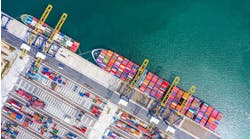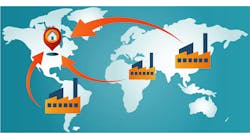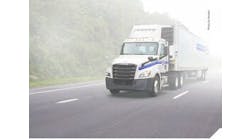"The American people deserve a safe, secure, and efficient transportation system." That statement opens the introduction to the 2007 budget for the US Department of Transportation. Indications are these are not goals we are achieving.
Efficiency has been a strong suit for the US transportation system, but many of the critical choke points in the national networks of highways, rail, air and ocean transport have been slightly masked by a slowing growth rate. At the same time US companies spent much of the first quarter working off excess inventories, further reducing pressures on the system.
The appearance of progress is misleading. True, there have been gains, but advocates of major infrastructure investment have repeatedly sounded the alarm, saying we won't be able to meet demand projections over the next 10, 15 or 20 years without significant expansion of highways, rail, airports, ports and the systems and processes supporting them.
Not only do we need to build more, we need to make fundamental changes in the way we operate. Labor flexibility will be critical. An 8- or 12-hour day for US ports is a luxury the economy can't afford. That means dray carriers, terminals, warehouses and countless other operations will also have to change the way they operate.
It's hard to argue that spending on security has been misplaced. The private sector stepped up on this one and supported or even led initiatives to secure US supply chains. Efforts will only intensify now that product safety issues have taken center stage. The "chain of custody" and "product pedigree" verification that comes as part of the security initiatives will extend to health and safety amid calls for greater visibility back to the source. The good news is we were already headed in that direction.
The tougher challenge, in the wake of the Minnesota I-35 bridge collapse, will be balancing needs to maintain current infrastructure with the necessity to expand. A veto threat to the last SAFETEA-LU appropriation forced Congress to cut billions of dollars from the bill. Instead of focusing on whether that led to the deferred maintenance that may be an underlying cause of the I-35 bridge disaster, attention should be turned to investments in the most critical infrastructure needs. The nation can't afford earmarks like a $315 million Alaskan "bridge to nowhere" when more than a quarter of its existing bridges are structurally deficient or structurally obsolete.
The debate is simple. The tests for what is appropriate use of federal funds are right there in the opening statement for the DOT budget: a safe, secure, and efficient transportation system.


